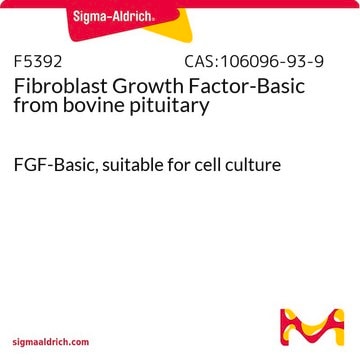FLAA
Adenosine 5′-triphosphate (ATP) Bioluminescent Assay Kit
for ATP quantitation
Synonym(s):
ATP Bioluminescence Assay, ATP Determination Kit, Luminescent ATP Detection kit
Sign Into View Organizational & Contract Pricing
All Photos(1)
About This Item
Recommended Products
storage temp.
−20°C
General description
The Adenosine 5′-triphosphate (ATP) Bioluminescent Assay Kit may be employed for the quantitative bioluminescent determination of ATP in samples. ATP is consumed and light is emitted when luciferase catalyzes the oxidation of D-luciferin. When ATP is the limiting reagent, the light emitted is proportional to the ATP present in the sample.
Application
Adenosine 5′-triphosphate (ATP) Bioluminescent Assay Kit has also been used in the quantification of ATP in 3D matrixes of human neurons, hepatic cells with ischemia, various bacterial cultures and lysosomes.
Kit Components Only
Product No.
Description
- FL-AAB Dilution buffer 1 mL/vial
- FL-AAM Assay mix 1 mL/vial
- FL-AAS ATP standard 1 mL/vial
signalword
Danger
hcodes
Hazard Classifications
Eye Dam. 1
Storage Class
10 - Combustible liquids
Choose from one of the most recent versions:
Already Own This Product?
Find documentation for the products that you have recently purchased in the Document Library.
Customers Also Viewed
Evaluation of antimicrobial activities of commercial herb and spice extracts against selected food-borne bacteria
Witkowska A M, et al.
Journal of Food Research, 2(4), 37-37 (2013)
John F C Steele et al.
PloS one, 14(8), e0221226-e0221226 (2019-08-29)
Plant NLRs are modular immune receptors that trigger rapid cell death in response to attempted infection by pathogens. A highly conserved nucleotide-binding domain shared with APAF-1, various R-proteins and CED-4 (NB-ARC domain) is proposed to act as a molecular switch
Marco A Tavares et al.
Environmental toxicology and pharmacology, 40(1), 206-214 (2015-07-06)
Fipronil is an insecticide extensively used to control pests in crops and animals. There are relates of poisoning due to exposure of fipronil in mammals and the liver has been suggested as potential target. In this study, we evaluated the
F Chen et al.
Journal of clinical microbiology, 32(11), 2791-2800 (1994-11-01)
A bioluminescent assay which employs the luciferin-luciferase ATP-dependent reaction was used to evaluate the viability of populations of Pneumocystis carinii derived from infected rat lungs. Contamination with host cells was reduced by a purification method which involved a combination of
Yuri L Boteon et al.
PloS one, 14(10), e0224066-e0224066 (2019-10-24)
The combination of hypothermic and normothermic machine perfusion (HMP+NMP) of the liver provides individual benefits of both techniques, improving the rescue of marginal organs. The aim of this study was to investigate the effect on the bioenergetic status and the
Our team of scientists has experience in all areas of research including Life Science, Material Science, Chemical Synthesis, Chromatography, Analytical and many others.
Contact Technical Service









